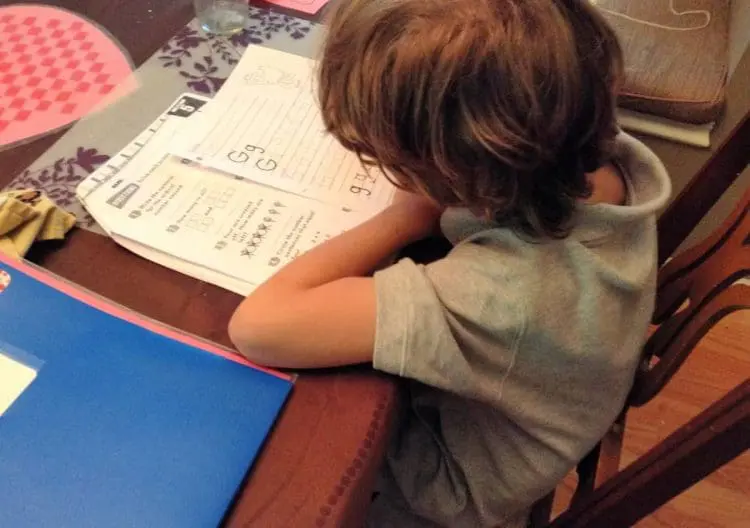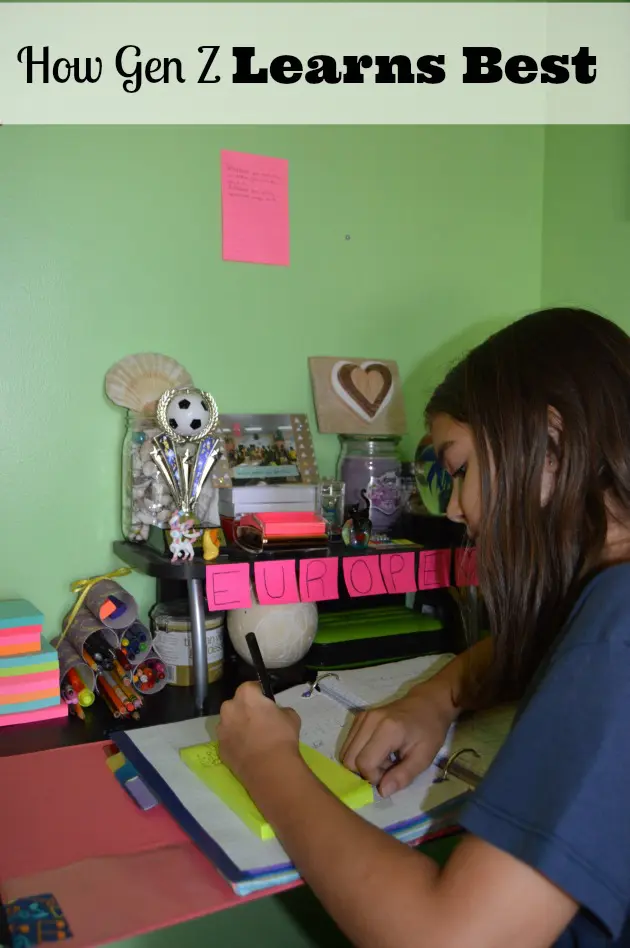The school year has started. So has the battle to get energetic kids, ready to play after a long day of school, to sit down and do their homework. This battle can be particularly difficult with restless children. Here are some homework tips that many parents have found helpful to establish a homework routine that works. A homework routine typically includes several key elements to help students stay organized, focused, and productive. Here is how to get started, what elements make up a homework routine, and how to avoid homework battles.
6 Homework Tips for Parents with Restless Kids

1. Create A Homework Routine
What elements make up a homework routine? A homework routine is a set schedule designed to help the child know what to expect. A homework routine makes things easier by creating a habit of doing homework at a specific time. The elements that make up a productive homework routine should include a start time, breaks at regular intervals, and a designated area in which to do the homework. This homework space may be the kitchen table, dining room table, or a desk in their room as long as it is clean and stocked with school supplies.
For younger children in elementary school the homework routine should be designed by a parent. By middle school the child may want to take the reins on their homework session with a little follow up from a parent. In high school, the homework routine should be designed by the student. However, if a parent notices grades dropping, they make need to make adjustments. For example, remove screen time from the school week if grades aren’t up to par.
Many children will want to have a break after school before starting homework assignments. After sitting still at school all day, I can see why. So allowing them an hour after they get home to play outdoors and have a snack is a great way to make sure they are prepared to start their homework. In this way, they will have expelled excess energy and they won’t have a hungry stomach bothering them during homework time.
Homework Routine Example
3:30 Child arrives home from school.
3:30-4:30 Snack time with active play outdoors when possible.
4:30 Child sits down at designated homework station.
4:30-5:00 Complete assignments.
5:00-5:15 Break
5:15-5:45 Finish any work due the next day and if there is time left, work on any long-term assignments.
The above homework schedule is for younger kids who can’t sit still and concentrate for long periods of time. Hopefully, they will complete homework within that time. If not, they can continue to do 30 minutes of homework and then take a break until complete. I would not let them play video games during their breaks. Save that type of sedentary activity as their reward for finishing completely.
A good homework routine should also include the elements below.
2. Help Kids Release Some Energy
Whether a child has a lot of energy or struggles with paying attention, providing an outlet for that energy will help avoid their impulse to get up and walk away. This can do wonders at helping a child focus on his or her school work. Try having your student sit on an exercise ball instead of a chair at the desk or table. Another option would be to tie an exercise band on the desk or chair where the student can pull and play with it with their feet. Or try giving them some chewing gum, which has been found to organize the nervous system. Whatever you try, make sure it is a small movement that can be done subconsciously, so your student is able to give full attention to their homework.

3. Provide Motivation
We all need motivation to get tasks completed, especially if the task seems difficult or boring. Avoid bribing or begging your child to do their homework. Rather, set clear ground rules for when they get home from school. For example, they can play with their friends after their homework is done. If your son or daughter seems to struggle with time management in particular, try setting a timer for 30 minutes. Then ask them to see how much they can get done before the timer goes off. When trying this approach, be sure the quality of the work doesn’t suffer. The time limit should serve as a motivator to focus and work in an efficient manner.
4. Be Available
Frustration at not understanding a homework assignment or being unable to get help can lead to stress and feelings of helplessness. The best way to help with this is to be available to your student as they are doing homework. In this way, they can ask questions and get help when they need it. If your child is unwilling to accept your help, they may benefit from a tutor. Or they may want to call a homework buddy who can answer their questions.
5. Tips For Focusing On Homework: Limit Distractions
Distractions are particularly problematic for kids with ADHD or other learning disabilities. Try to set aside a quiet room with few visual distractions for your child to work in. Classical music and white noise has been found to be helpful in some situations. For teenagers, take away the cellphone and social media until their homework is completed. Giving students a snack with protein and complex carbs will keep them to focus on school work not an empty stomach. Most importantly, when you establish a homework routine, keep the TV off.
6. Adapt to Your Child’s Needs
Every child learns differently, so the most important thing to remember is to adapt to your child’s needs when figuring out how to help establish a homework routine. Perhaps your child would benefit from online tutoring or educational math game apps if they enjoy computer games. In addition, talk with your child’s teacher about the homework load. Sometimes the amount of time a teacher is thinking an assignment will take ends up being twice as long, so let them know if it is getting to be too much. For students with special needs, a continuing conversation with the teacher as well as counselors will go a long way to ensuring a happy school year both for the parents and for the child.
Gen Z is known as the “digital generation” and I think we can all see as parents how much they rely on devices. However, not surprisingly, Gen Z still sees value in using both analog and digital tools when it comes to learning and education. According to the Post-it® Brand Study, 93% of Gen Z believe students who write things down on paper get better grades. I have to agree from my own personal experience and from working with my kids to prepare for tests. We find that writing information down helps commit it to memory much better than just reading or saying it.
Conclusion on Tips For Getting Young Kids To Do Their Homework
Your homework routine should include some common elements: designated study space, consistent schedule, prioritization of tasks, breaks, use of organizational tools like planners, goal setting, and a support system. Parents, teachers, or tutors, should provide assistance and encouragement when needed. Turning off notifications, keeping phones away, and limiting access to distracting websites can help maintain focus during homework.
I hope you found these homework tips for parents helpful when assisting your child to create a positive homework experience. Working to establish a homework routine helps your child know what to expect and when. This helps them to create healthy habits with knowing that work comes before screen time but that active breaks are important too. Having a routine can help to avoid homework battles. It will also give kids a sense of accomplishment as they check off their to-do list.
Related Posts:
Back to School Essential Oils Roller Blend for Kids


Alisha says
A homework routine is a set schedule designed by a parent to help a child get into a pattern of behavior and know what to expect. Thanks for this very extensive list of helpful homework tips, advice, and insights. Keep it up. I agree that helping younger students develop a good work ethic will pay huge in the long run.
Nina says
Thanks for sharing the great information on why a homework routine is helpful. I also enjoyed the homework routine examples. Very good starting place.
Terry says
Thanks for this informative post and motivating me to create a homework plan for my young son. Homework completion is so important to academic success and I want to help him to form a firm foundation.
Carina says
Very practical advice! Establishing a consistent homework routine helps students stay organized, manage time effectively, and reduce stress while improving learning outcomes.
Noah Wilson says
As a working mom of two, I really connected with this post. After long hours at work in my role as a business analyst at Talentmate, homework time can often feel like the toughest part of the evening.
I love how you broke the routine into simple steps and built in breaks. It feels so practical and realistic for kids who struggle to stay focused. The example schedule is something I’m definitely going to try with my little ones, and I especially liked the idea of giving kids time to relax before starting homework. It makes so much sense to let them recharge so they can concentrate better afterward.